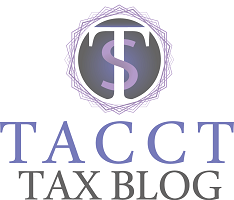Payroll Tax Cut Expired
The two-year payroll tax cut reduced for employees and self-employment tax for business owners. This reduction was originally part of the 2010 Tax Relief Act that included other economic stimulus measures to encourage consumer spending and was renewed for 2012.
The payroll tax cut program was a 2% reduction in the Social Security portion of FICA taxes in 2011 and 2012. The provisions of the law have expired, so the Social Security tax rate reverts to the previous level. Social Security (OASDI) is part of the FICA taxes which must be withheld from employee pay; these taxes also include Medicare taxes. FICA taxes are based on employee gross pay.
The payroll tax cut of 2011 and 2012 did not affect the employer portion of Social Security taxes and it did not affect Medicare tax withholding for employees and employers.
Current FICA Tax Amounts
Here’s the breakdown of FICA taxes before 2011 and currently (effective January 1, 2013):
- The Social Security portion is 6.2% of gross wages for employees,
- The Medicare portion is 1.45% of gross wages for employees, and
- The employer portion of this tax is 7.65%.
The total of both employee and employer FICA tax is 15.3%.
When Withholding Changes Must be Made
On January 3, 2013, the IRS announced the deadlines for making changes in employee withholding for the 2% increase in Social Security taxes. The IRS said:
- As soon as possible, employers should begin withholding employee Social Security taxes at the rate of 6.2% of gross wages, restoring the previous rate (before the payroll tax cut of 2011 and 2012)
- Employers should start using the revised withholding tables and correct the amount of Social Security tax withheld as soon as possible in 2013, but not later than Feb. 15, 2013. For any Social Security tax under-withheld before that date, employers should make the appropriate adjustment in workers’ pay as soon as possible, but not later than March 31, 2013.
In other words, you must begin withholding Social Security at the 6.2% rate, effective with employee paychecks issued no later than February 15, 2013. And you must refund any under-withholding to employees before March 15, 2013. The longer you wait to make the change, the more you will have to refund employees, before March 31.
Changing Employee Withholding for Higher Payroll Taxes
How you make the change in employee withholding depends on how you process payroll:
- If you do payroll processing using accounting software, you may be able to make the change manually
- If your accounting software processes payroll online, the software should be updated for this change. If you didn’t receive an announcement about this change, check with your software company to see when they will begin the withholding change and how they plan to refund any under-withholding.
- If you have a payroll processing service, they should inform you of the change and how they will handle any under-withholding.
Calculating Under-withholding Amounts
Unless you were able to make the correction to Social Security withholding for the first payroll of 2013, you will have to calculate the amount of under-withholding and refund it to employees. To calculate the amount for each employee, add up the gross wages for each payroll in which the 2% increase was not applied and multiply that total by 2%. This is the amount that must be refunded to each employee.
Changing Self-employment Tax Withholding for Higher Social Security Taxes
The payroll tax cut program also applied to self-employment tax (the tax paid by self-employed business owners for Social Security and Medicare). This tax was also reduced by 2% during 2011 and 2012, from 15.3% of net income to 13.3% of net income. Effective January 1, 2013, the self-employment tax rate was restored to the previous rate of 15.3% of net income.
If you pay estimated taxes, check with your tax preparer to see if you should increase your estimated tax for this additional 2% that will be taxable to you for 2012.
Self-employment tax is calculated on Schedule SE, and is based on the net income of the business, from Schedule C, along with the business owner’s personal income taxes. These forms are completed during tax season after the end of the company’s fiscal year.
For self-employed individuals who have a fiscal year ending in December, 2012, the 2012 Schedule SE, which is completed in 2013, will include the 2% reduction in Social Security tax.
By Jean Murray, About.com Guide




